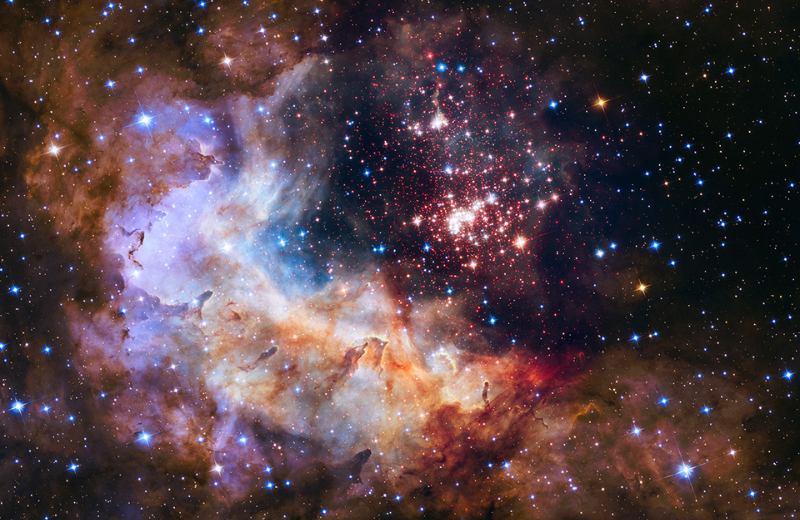More than a cluster of lights in the night sky, the Phoenix constellation weaves together tales of rebirth and the mysteries of our universe. Whether you're drawn to its rich history or the stunning celestial display, this constellation has a fascinating narrative waiting to be discovered.
Jump to:
Recommended for you!
Best SellersWhat is the Phoenix Constellation?
The Phoenix constellation, named after the mythical firebird that rises from its ashes, resides in the southern hemisphere. It forms part of a group known as the “Southern Birds,” alongside constellations like Grus, Pavo, and Tucana. The constellation Phoenix may not be as familiar as others, but its uniqueness and the legends associated with it certainly make it memorable.
What Does Phoenix Look Like?

Visually, Phoenix is somewhat elongated, with its stars arranged in a shape resembling the bird for which it is named. The constellation stretches out gracefully, hinting at the elegance of the mythical Phoenix bird. It covers an area of about 469 square degrees, making it the 37th largest constellation in the night sky.
How Far is the Phoenix Constellation from Earth?
The distance to Phoenix’s stars varies widely, as it encompasses numerous celestial bodies, each situated at different points in our universe. For instance, Ankaa, the brightest star in the Phoenix constellation, lies approximately 85 light-years away from Earth. When you look at this constellation, you’re gazing at light that has travelled for decades to reach your eyes.
The Phoenix Constellation Myth

The myth of the Phoenix spans various cultures, from ancient Egypt to Greek mythology. The bird symbolises renewal, rebirth, and immortality. According to legend, the Phoenix would live for several hundred years before burning itself in a pyre, only to rise anew from the ashes. This theme of resurrection is a powerful image, inspiring awe and wonder.
In terms of its naming history, the Phoenix constellation was first introduced in the 16th century by Dutch astronomer Petrus Plancius, based on observations made during sea expeditions. The constellation’s name immortalises the mythical creature and its story of everlasting life.
Phoenix' Stars
Phoenix might not be the most well-known constellation, but it hosts some impressive stars that make it memorable:
- Ankaa (Alpha Phoenicis): The brightest star in the Phoenix constellation, Ankaa is a striking orange K-type giant with a magnitude of 2.39. Its name comes from the Arabic word for "the phoenix," perfectly symbolising the mythical firebird the constellation represents. Ankaa lies approximately 85 light-years from Earth and serves as a key reference point for identifying Phoenix in the night sky.
- Beta Phoenicis: This notable star is actually a binary system, consisting of two yellow giant stars with a combined magnitude of 3.32. Although not as luminous as Ankaa, Beta Phoenicis still plays a significant role in shaping the constellation's elegant appearance. It is located roughly 198 light-years from Earth.
- Gamma Phoenicis: Gamma Phoenicis is a red giant star with a variable brightness, boasting a magnitude that changes over time. Situated about 235 light-years from Earth, it adds dynamic beauty to the constellation. Its changing light and deep red hue make it a captivating feature for stargazers.
Nebulae in the Phoenix Constellation

Phoenix may not be teeming with famous nebulae like some constellations, but it is home to some fascinating celestial features. The Phoenix Cluster, also known as SPT-CLJ2344-4243, is a striking galaxy cluster located within this constellation. Interestingly, it’s one of the most massive and energetic galaxy clusters known in the universe, containing a black hole at its centre.
You might wonder, “Is Phoenix a black hole?” While the constellation itself isn't a black hole, it does indeed host this incredible galactic phenomenon.
Finding Phoenix in the Sky
Spotting the Phoenix constellation can be a rewarding experience, especially if you’re in the right place at the right time. The optimal viewing period for Phoenix is between October and December, when it’s most visible in the southern hemisphere. Unfortunately, the constellation isn’t easily seen from the northern hemisphere, so those situated farther south have the best chance of catching a glimpse.
Locating Phoenix
To find Phoenix, start by identifying its neighbours: Grus and Eridanus. These constellations will act as your guideposts. While Phoenix doesn’t have an obvious shape like the Big Dipper, locating Ankaa, its brightest star, can make your search much easier. Ankaa lies at the heart of the constellation and shines brightly, making it a key point to trace the surrounding stars and form the shape of Phoenix in the sky.
Viewing Tips for Phoenix
While you may spot some of Phoenix’s stars with the naked eye, using binoculars or a small telescope will enhance your view, especially in areas with little light pollution. A telescope can bring out the vivid colours and finer details of stars like Ankaa, making your stargazing experience even more magical.
To get the best results, find a dark, open space away from city lights and allow your eyes to adjust to the darkness. This will improve your chances of seeing the constellation clearly and appreciating the elegance of this celestial firebird.
Recommended for you!
Best SellersFun Facts About Phoenix
- Nickname: The Phoenix constellation is sometimes nicknamed “The Southern Firebird” due to the mythological bird it represents.
- Notable Star: Ankaa, the brightest star, is a giant star approximately 10 times the size of our Sun.
- Astrological Significance: In astrology, Phoenix is linked to themes of transformation and renewal, echoing the mythological story of the bird.
- Galaxy Cluster: The Phoenix Cluster's central black hole emits vast amounts of X-ray radiation, making it an intriguing subject of study for astronomers.
Study Astronomy for £29
If the Phoenix constellation has sparked your curiosity, why not explore more about the stars and the cosmos with our Astronomy Diploma Course at Centre of Excellence? This course offers a detailed understanding of the universe, from constellations and star types to the fundamentals of space observation. Perfect for all budding astronomers, the course is available for a discounted price of £29.













